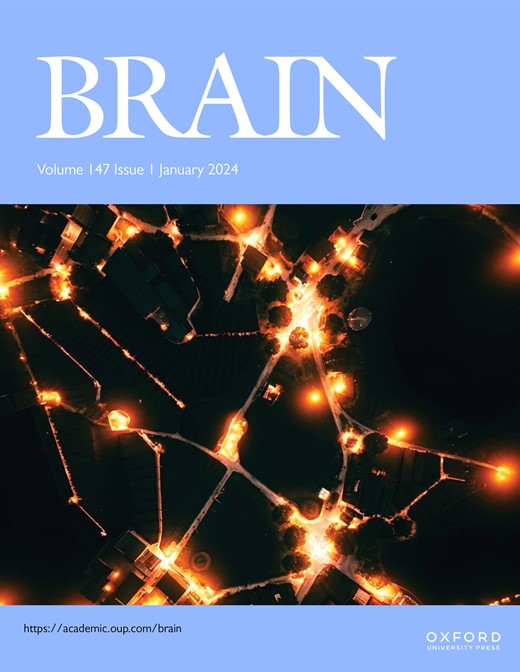Neuropsychiatric symptoms and progression to pathologically confirmed Alzheimer’s disease
IF 10.6
1区 医学
Q1 CLINICAL NEUROLOGY
引用次数: 0
Abstract
Whether or not neuropsychiatric symptoms (NPS) in advance of dementia are associated with Alzheimer disease (AD) and/or other neurodegenerative dementias remains to be determined. The mild behavioural impairment (MBI) construct selects persons with NPS that are later-life emergent and persistent to identify a high-risk group for cognitive decline and incident dementia. Here, in older adults without dementia at baseline, we examined whether postmortem AD and other neurodegenerative pathologies were associated with MBI in the five years before death. National Alzheimer’s Coordinating Center study autopsy participants (n=1016, 82.6 years, 48.7% female, 60% normal cognition) were included in the analyses. Using the Neuropsychiatric Inventory–Questionnaire, MBI+ status was operationalized as NPS persistence at >2/3 of pre-dementia study visits; otherwise, status was non-MBI NPS. The presence of AD, Lewy body disease (LBD), and TDP-43 neuropathological changes were determined using published guidelines. Adjusted multinomial logistic regressions modeled pathology-NPS status associations. Adjusted Cox proportional hazards regressions modeled hazard for AD-dementia at each NPS status level, including interaction terms with cognitive status and each co-pathology. AD+ individuals (51.4%) were 88.4% more likely to be MBI+ ∼5 years prior than AD- individuals (odds ratio (OR):1.88, 95% confidence interval (CI):1.29-2.75, p<0.01); however, the likelihood of having non-MBI NPS was not different (OR:1.22, CI:0.90-1.66, p=0.20). No significant associations were seen for LBD pathology, even among AD+ participants. There were no significant differences in the levels of LBD or TDP-43 in those with MBI compared to no MBI. Among MBI progressors to dementia (n=106), 33.0% were solely AD+, 18.9% were mixed AD+/LBD+, and 11.3% had all three pathologies. For all those with MBI (including dementia non-progressors), of persons with LBD, 83.4% were comorbid with AD. In the survival analysis, MBI+ individuals had a 2.03-fold greater progression rate to AD-dementia than noNPS (CI: 1.60-2.57, p<0.01). Progression rate was higher in MCI, but the effect of MBI on progression was greater in NC (HR:3.05, CI:1.37-6.80, p<0.01) vs. MCI (HR:1.93, CI:1.51-2.47, p<0.01). Limbic LBD appeared to also moderate the association between MBI and incident AD (Limbic LBD+ HR: 4.64, CI: 2.05-10.50, p<0.001; Limbic LBD- HR: 1.87, CI: 1.46-2.40, p<0.001). Antecedent MBI was strongly associated with AD pathology but not with other neurodegenerative dementias. Inclusion of MBI in research and clinical frameworks for dementia may aid in identification of early stages of neurodegenerative disease, which may be helpful for selecting patients for treatment with AD disease-modifying drugs.神经精神症状和病理证实的阿尔茨海默病的进展
痴呆前的神经精神症状(NPS)是否与阿尔茨海默病(AD)和/或其他神经退行性痴呆相关仍有待确定。轻度行为障碍(MBI)结构选择NPS患者,这些患者在晚年出现并持续存在,以确定认知能力下降和偶发性痴呆的高危人群。在这项研究中,在基线时没有痴呆的老年人中,我们检查了死后AD和其他神经退行性病理是否与死前5年的MBI相关。国家阿尔茨海默病协调中心研究尸检参与者(n=1016, 82.6岁,48.7%为女性,60%为正常认知)被纳入分析。使用神经精神病学问卷,MBI+状态在痴呆前研究访问的2/3被操作为NPS持续;否则状态为non-MBI NPS。根据已发表的指南确定AD、路易体病(LBD)和TDP-43神经病理改变的存在。调整后的多项逻辑回归模拟了病理- nps状态的关联。调整后的Cox比例风险回归模型模拟了每个NPS状态水平下ad -痴呆的风险,包括与认知状态和每种共同病理的相互作用。AD+个体(51.4%)发生MBI+ ~ 5年的可能性比AD-个体高88.4%(比值比(OR):1.88, 95%可信区间(CI):1.29-2.75, p<0.01);然而,发生非mbi NPS的可能性没有差异(OR:1.22, CI:0.90-1.66, p=0.20)。即使在AD+参与者中,LBD病理也没有明显的关联。与非MBI患者相比,MBI患者的LBD或TDP-43水平无显著差异。在MBI进展为痴呆的患者中(n=106), 33.0%为单纯AD+, 18.9%为AD+/LBD+混合,11.3%同时具有三种病理。对于所有MBI患者(包括痴呆非进展者),LBD患者中,83.4%与AD合并症。在生存分析中,MBI+个体的ad -痴呆进展率比noNPS高2.03倍(CI: 1.60-2.57, p<0.01)。MCI的进展率更高,但MBI对NC进展的影响更大(HR:3.05, CI:1.37-6.80, p<0.01),而MCI (HR:1.93, CI:1.51-2.47, p<0.01)。边缘LBD似乎也缓和了MBI和AD发病之间的关联(边缘LBD+ HR: 4.64, CI: 2.05-10.50, p amp;lt;0.001;边缘LBD- HR: 1.87, CI: 1.46-2.40, p<0.001)。先前的MBI与AD病理密切相关,但与其他神经退行性痴呆无关。将MBI纳入痴呆的研究和临床框架可能有助于识别神经退行性疾病的早期阶段,这可能有助于选择使用AD疾病调节药物治疗的患者。
本文章由计算机程序翻译,如有差异,请以英文原文为准。
求助全文
约1分钟内获得全文
求助全文
来源期刊

Brain
医学-临床神经学
CiteScore
20.30
自引率
4.10%
发文量
458
审稿时长
3-6 weeks
期刊介绍:
Brain, a journal focused on clinical neurology and translational neuroscience, has been publishing landmark papers since 1878. The journal aims to expand its scope by including studies that shed light on disease mechanisms and conducting innovative clinical trials for brain disorders. With a wide range of topics covered, the Editorial Board represents the international readership and diverse coverage of the journal. Accepted articles are promptly posted online, typically within a few weeks of acceptance. As of 2022, Brain holds an impressive impact factor of 14.5, according to the Journal Citation Reports.
 求助内容:
求助内容: 应助结果提醒方式:
应助结果提醒方式:


